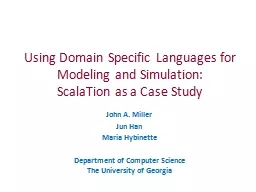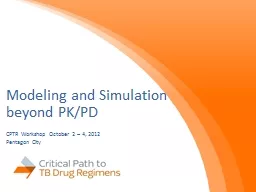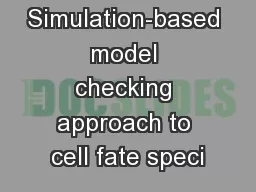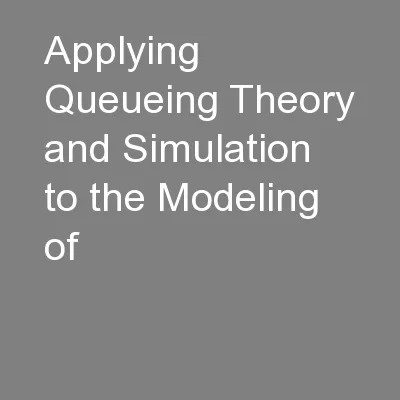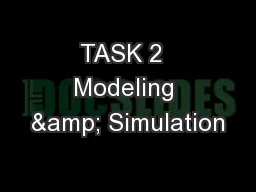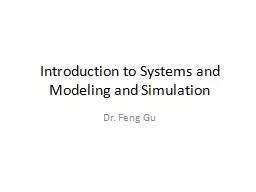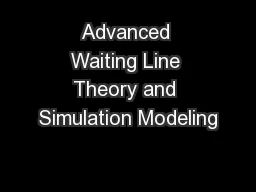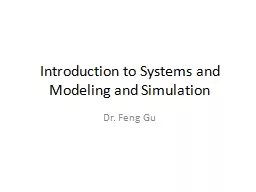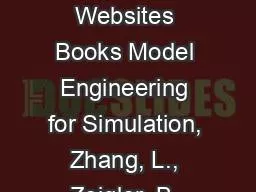PPT-Using Domain Specific Languages for Modeling and Simulation:
Author : uoutfeature | Published Date : 2020-06-30
ScalaTion as a Case Study John A Miller Jun Han Maria Hybinette Department of Computer Science The University of Georgia Conceptual Model vs Simulation Program
Presentation Embed Code
Download Presentation
Download Presentation The PPT/PDF document "Using Domain Specific Languages for Mode..." is the property of its rightful owner. Permission is granted to download and print the materials on this website for personal, non-commercial use only, and to display it on your personal computer provided you do not modify the materials and that you retain all copyright notices contained in the materials. By downloading content from our website, you accept the terms of this agreement.
Using Domain Specific Languages for Modeling and Simulation:: Transcript
Download Rules Of Document
"Using Domain Specific Languages for Modeling and Simulation:"The content belongs to its owner. You may download and print it for personal use, without modification, and keep all copyright notices. By downloading, you agree to these terms.
Related Documents

